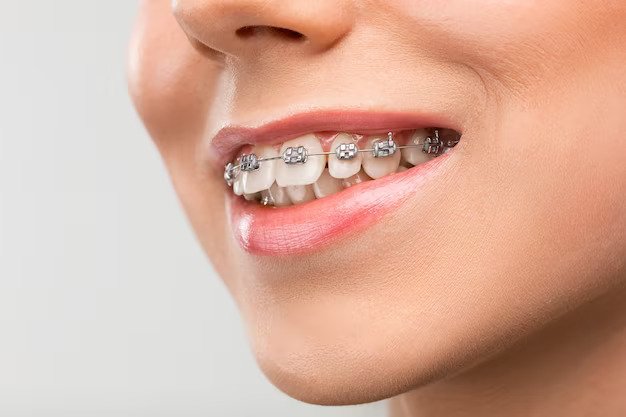
Dental Braces
Dental braces are orthodontic devices designed to correct misalignments and irregularities in the positioning of teeth. This widely used orthodontic treatment helps improve both the function and appearance of the teeth and jaws. Here are key aspects of dental braces:
Types of Dental Braces:
Traditional Braces: These consist of metal brackets attached to each tooth, connected by wires and secured with rubber bands. They are highly effective and have been used for many years.
Ceramic Braces: Similar to traditional braces but made from clear or tooth-colored materials, providing a more discreet appearance.
Lingual Braces: Placed on the back (lingual) side of the teeth, making them virtually invisible from the front.
Invisible Aligners: Custom-made, clear plastic trays that gradually shift teeth into alignment. Examples include Invisalign and ClearCorrect.
Correction of Misalignments: Braces address a range of orthodontic issues, including crooked teeth, crowded teeth, gaps, overbites, underbites, and crossbites. The braces work by applying continuous pressure on the teeth, guiding them into the desired positions over time.
Treatment Duration:
The duration of orthodontic treatment with braces varies based on the complexity of the case. It typically ranges from several months to a few years.
Adjustments and Maintenance:
Regular adjustments by the orthodontist are necessary to ensure the braces continue to exert the correct pressure on the teeth.
Good oral hygiene practices, including proper brushing and flossing, are crucial during orthodontic treatment to prevent issues like tooth decay and gum disease.
Discomfort and Adaptation:
It is common to experience some discomfort or soreness after initial placement and subsequent adjustments. Over-the-counter pain relievers can help manage this discomfort.
Patients may need a brief adaptation period to get used to the feel of braces in their mouths.
Orthodontic Consultation:
Before getting braces, a thorough orthodontic consultation is essential. The orthodontist evaluates the patient’s oral health, takes X-rays, and develops a customized treatment plan.
Benefits Beyond Aesthetics:
While braces contribute to a more appealing smile, they also improve oral health by aligning the teeth, which facilitates easier cleaning and reduces the risk of dental problems.
Retention Phase:
After braces are removed, a retention phase follows, during which patients may wear retainers to help maintain the corrected tooth positions.
Impact on Confidence:
Orthodontic treatment with braces can have a significant positive impact on an individual’s confidence and self-esteem by enhancing the appearance of their smile.
Dental braces are a transformative orthodontic solution that goes beyond cosmetic improvements, contributing to better oral health and function. Advances in orthodontic technology have provided patients with various options, allowing them to choose a treatment that aligns with their preferences and lifestyle. Regular communication with the orthodontic team ensures optimal progress throughout the treatment journey.

